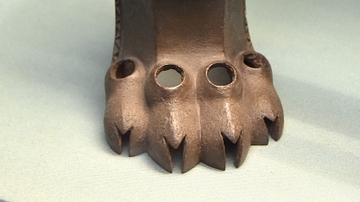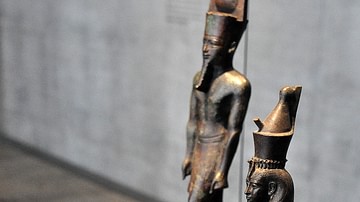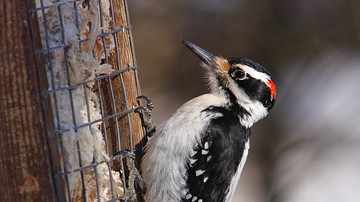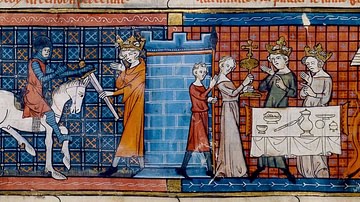Search
Did you mean: Cimon?
Search Results

Image
Bronze Lion's Foot from Urartu
This large foot was probably fit into onto the legs of a table or bed. The decoration on the front is an Anatolian version of the Egyptian winged sun-disc. This would have originally been inlaid with knuckles and claws. From Toprakkale, Eastern...

Article
Egyptian Gods - The Complete List
The gods and goddesses of Ancient Egypt were an integral part of the people's everyday lives for over 3,000 years. There were over 2,000 deities in the Egyptian pantheon, many whose names are well known - Isis, Osiris, Horus, Amun, Ra, Hathor...

Article
The Woodpecker's Mother-in-Law
The Woodpecker's Mother-in-Law is a Cheyenne tale which, like any other, is open to various interpretations but, among them, highlights the strength and autonomy of Cheyenne women. The old woman and her daughter each possess supernatural...

Article
The Origins of British Pub Names
Pubs remain a prominent feature of the rural and urban landscapes of Britain, but their names very often date back to medieval times. Red lions, white horses, and colourful characters peer from pub signs as landlords choose names to represent...

Article
Another Ariamanus Statue Found: The Evil Spirit of Mithraic Religion
It is rare when a new find creates renewed interest in an old subject. Here, the new find is a leontocephaline (lion-headed) figure of unknown provenance, weighing 5.8 kg and 37 cm in height with a width of 14 cm. Its base is partially broken...

Article
The Mesopotamian Pantheon
The gods of the Mesopotamian region were not uniform in name, power, provenance or status in the hierarchy. Mesopotamian culture varied from region to region and, because of this, Marduk should not be regarded as King of the Gods in the same...

Image Gallery
A Gallery of Lions of Mesopotamia
The Asiatic lion in Mesopotamia symbolized the forces of chaos, which the king defeated in his role as a champion of order and civilization. Lions appear in works of art from the Early Dynastic Period through the time of the Neo-Assyrian...

Definition
Chretien de Troyes
Chretien de Troyes (l. c. 1130-1190 CE) was the greatest romantic poet of his era, regarded today as the Father of Arthurian Romance (along with Geoffrey of Monmouth) and also Father of the Novel owing to his narrative form. He was most likely...

3D Image
Egyptian Lion
Laying Lion, Egypt, 1st century BCE, Rom, Capitol, plaster copy. The Royal Cast Collection (Copenhagen, Denmark). Made with Memento Beta (now ReMake) from AutoDesk. In the Pharaonic period, lions were relatively few in Egypt, but were...

Definition
The Great Sphinx of Giza
The Great Sphinx of Giza is the most instantly recognizable statue associated with ancient Egypt and among the most famous in the world. The sculpture, of a recumbent lion with the head of an Egyptian king, was carved out of limestone on...